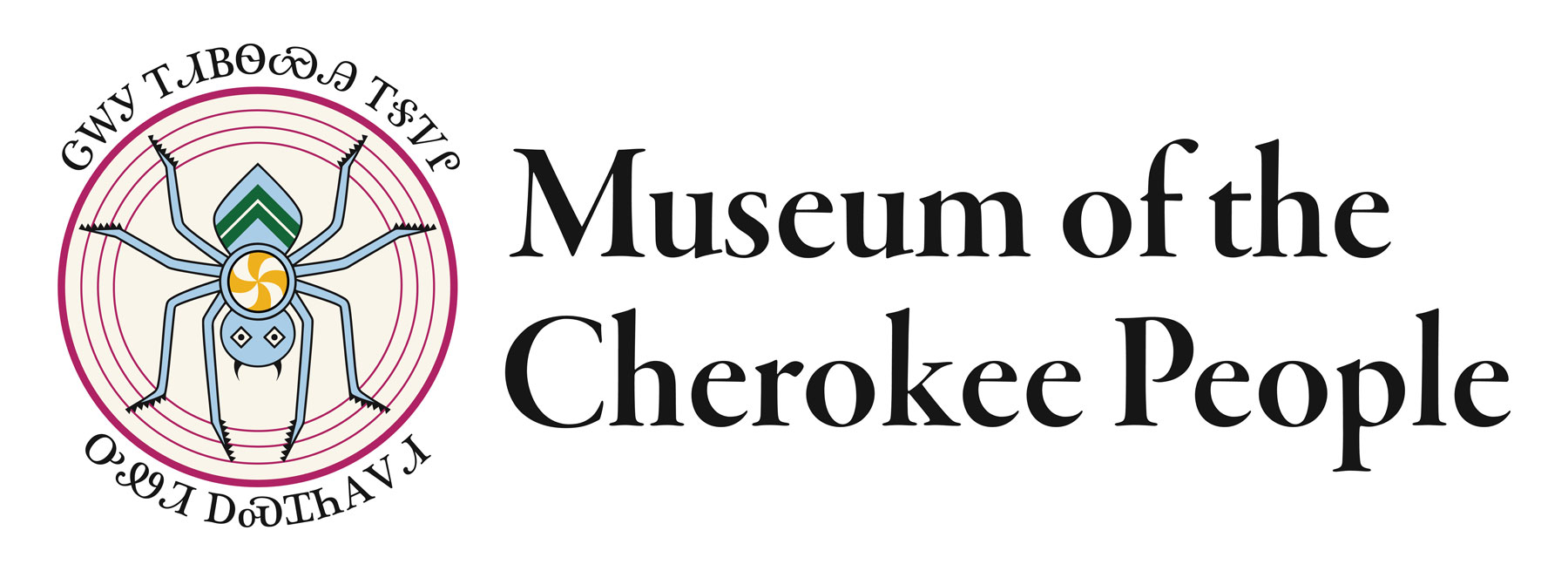
Nestled within the Smokies is one of the country’s oldest tribal museums. Located on the Qualla Boundary, in Cherokee, North Carolina, the tribal museum of the Eastern Band of Cherokee Indians has a new, vibrant look. While this fresh branding may feel ultra-modern, its inspiration is anything but. These colors have existed in flora and fauna used by Cherokee people for thousands of years here among these mountains.
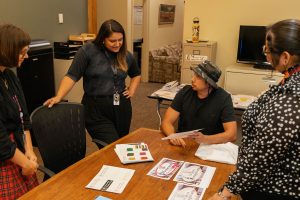
As the Eastern Band of Cherokee Indians (EBCI), we are fortunate to be on our ancestral homelands, and the museum is centrally located within the Great Smoky Mountains. For a lot of Cherokee people, sense of place and connection to the land is important because we’re from this area—we’ve lived here for thousands of years, lived off this land, and came from it. We have a special connection to this place. There is something that I enjoy from each time of year here: the magenta of the rhododendron, fall when the leaves are changing, seeing snow and the evergreen trees in wintertime.
I have worked at the museum for ten years in various positions. It was exciting when Shana Bushyhead Condill (Eastern Band of Cherokee Indians), the museum’s executive director, announced that the museum was creating a designer position. I went to school for graphic communications, and I was already helping with photography and design work for two exhibitions, Many Faces: A Cherokee Mask Exhibit and A Living Language: Cherokee Syllabary in Contemporary Art.
I got into design because I never felt accurately represented. There wasn’t a lot of design, or even art, about Native life—or if there was, it was usually very stereotypical or outdated. There are so many elements of our culture, and of this place, that I thought could translate into design that could be a modern representation of Cherokee people.
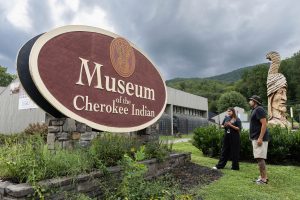
When I applied and got the job as the Museum of the Cherokee Indian’s Designer in October 2021, Shana shared the museum’s plans to update the main exhibit. This plan included a new name that better reflects its commitment to our tribal community: the Museum of the Cherokee People. In changing the name by adding a more encompassing and inclusionary word, we are honoring the museum’s 75-year legacy—it’s right there in our mission, “to preserve and perpetuate the history, culture, and stories of the Cherokee people.” “People” connects the past, present, and future.
We envisioned a museum that shares the story of a living people and serves as a resource and place of inspiration for our tribal community. We started talking about a rebrand, and this inspired me to create the initial design concept over a couple of weeks. In the beginning, I imagined red and blue hues since historically red and blue were two of the most common colors Cherokee people traded for and used. My mind started jumping around, and I thought about how, before—and even after—trade we were dyeing things with natural colors and pigments. I started to think about “natural,” and what that word means in the context of color palettes. When you look at design work about or for Native people, the “natural” color palette is usually very muddy and boring: terra cotta, orange, turquoise, beige, brown, murky greens, and yellow. For me, the flora and fauna I see here in the Great Smoky Mountains are vibrant pink, red, yellow, and green. The Blue Ridge Parkway and the Great Smoky Mountains are known for having a blue hue. This new palette represents a different way to portray earth tones that is an actual representation of this area and makes them look more contemporary.
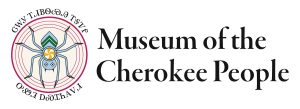
The museum’s logo has been a direct copy of a shell gorget carving from the Mississippian period. With the rebrand in mind, I knew I wanted to honor the water spider and where it came from but in a contemporary way. I took inspiration from real water spiders that I always saw growing up in the river that flows through the Qualla Boundary. I was inspired by a mountain peak design I saw on an 18th-century Cherokee bandolier bag, and this was the inspiration for the feelers on the water spider’s legs. Traditionally, bandolier bags were used to represent status and keep important items within reach. I knew this was the visual representation the museum needed to reflect our dedication to protecting our tribe’s cultural objects.
The final product is a clean, sleek, and contemporary brand that showcases the museum’s direction and future.
“I am so excited to finally be able to reveal the new branding Tyra designed to the world,” Condill says. “It beautifully illustrates what we do, who we serve, and our aspirations for the future. It is intentional. It is impactful. And it reflects both our mission and who we are as Eastern Band people connected to this place.”
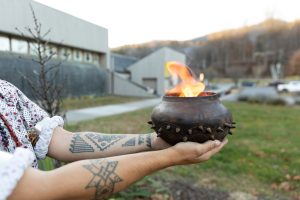
The Museum of the Cherokee People wants to be an example and a leader, not only among tribal museums, but in the museum world as a whole. We want to redefine what people think of when they think of museums and reestablish what a museum can be. We want the Museum of the Cherokee People to be a place for a community and a place where visitors can come in and hear our story from Cherokee voices.
For visitors to Cherokee and the Great Smoky Mountains, I hope these new colors catch their eyes and they see a contemporary, living, current museum. I want them to see and understand that, as Cherokee people, we are still here. We’re still honoring the past while creating a new future for us—our culture is ever-evolving.
I hope our tribal citizens are excited and proud of this new era as we celebrate our 75th anniversary. I hope that the meaning and thought process behind the updated spider and color palette are things they can appreciate as Cherokee people: it reflects our mission, vision, values, and new direction. I hope, seven generations from now, they can see what we’re doing now at the museum, take the work we’ve done, and make it better.
Subscribe to get the latest posts sent to your email.
The Great Smokies Welcome Center is located on U.S. 321 in Townsend, TN, 2 miles from the west entrance to Great Smoky Mountains National Park. Visitors can get information about things to see and do in and around the national park and shop from a wide selection of books, gifts, and other Smokies merchandise. Daily, weekly, and annual parking tags for the national park are also available.